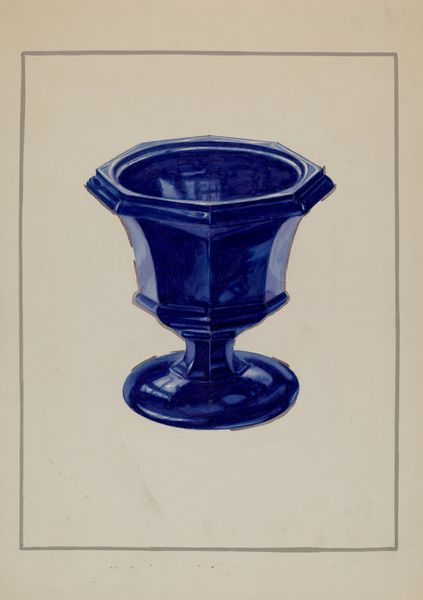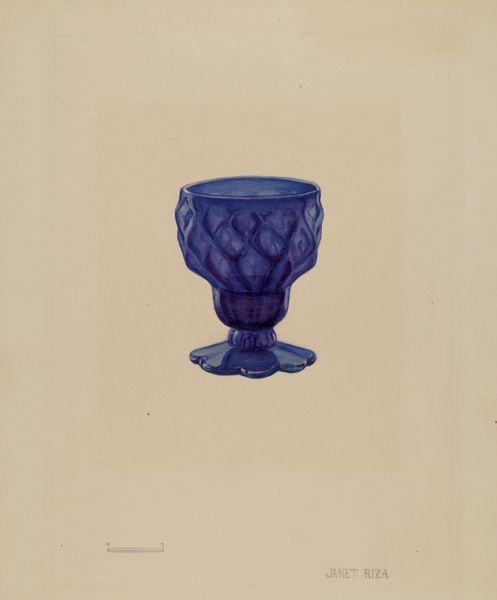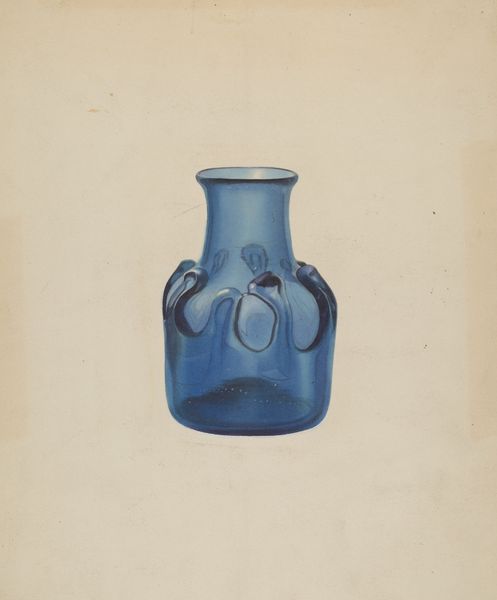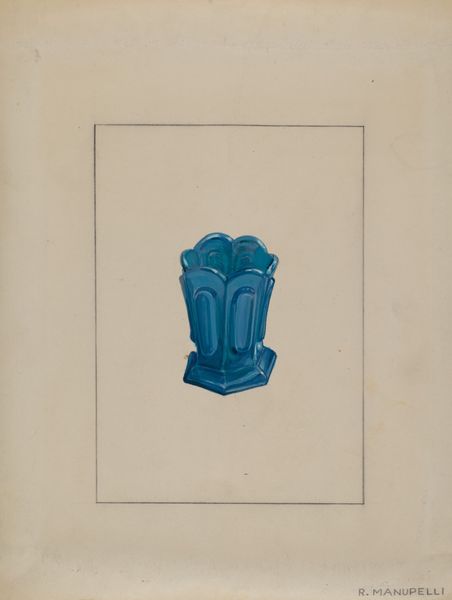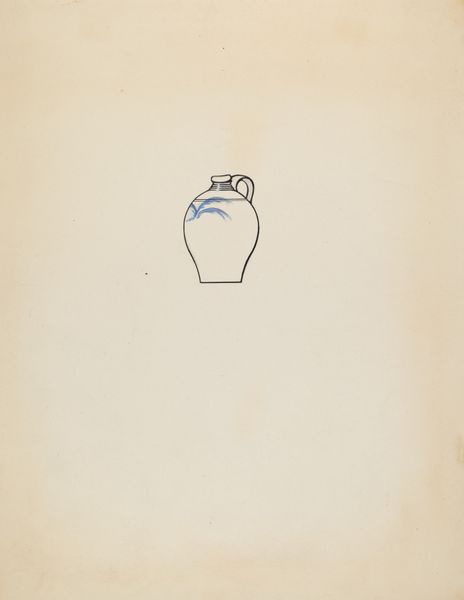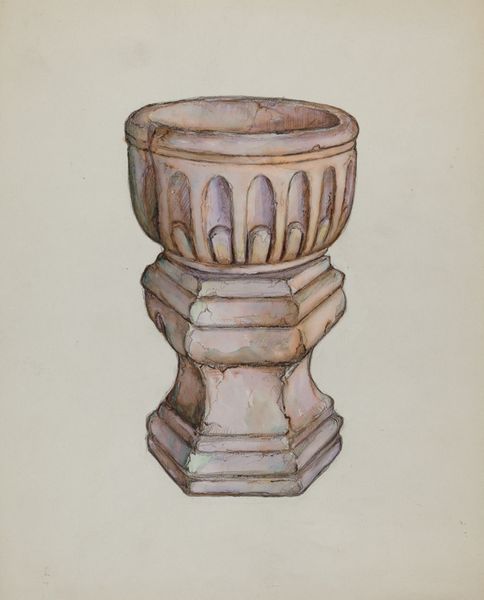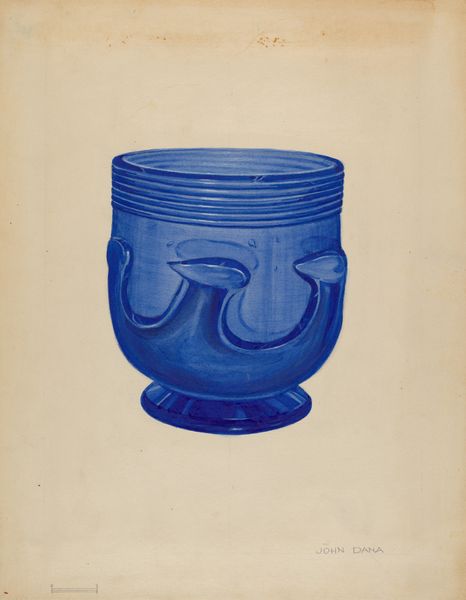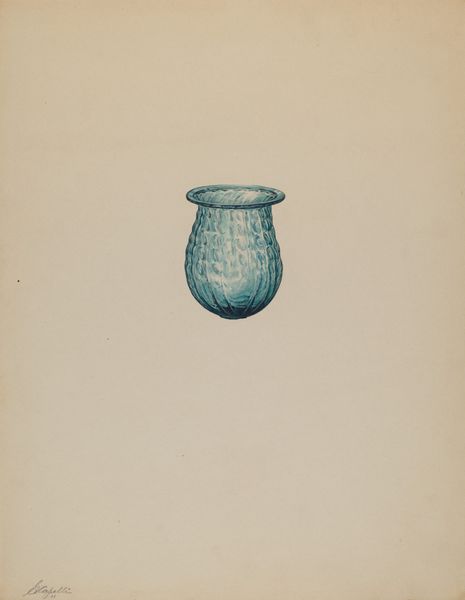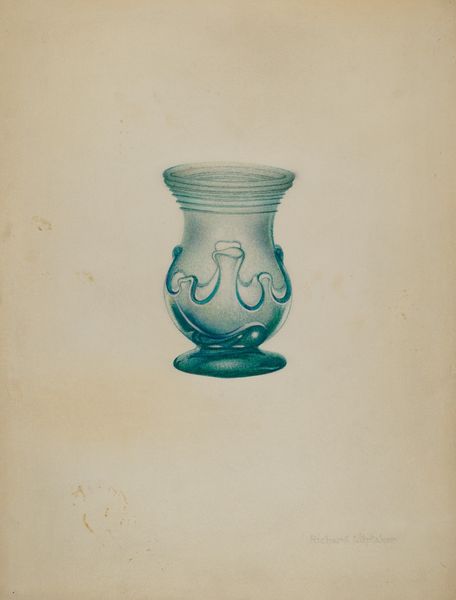
drawing, ceramic, watercolor
#
drawing
#
caricature
#
ceramic
#
watercolor
#
ceramic
#
watercolour illustration
Dimensions: overall: 29.8 x 23 cm (11 3/4 x 9 1/16 in.)
Copyright: National Gallery of Art: CC0 1.0
Editor: Here we have John Tarantino's "Salt Cellar" from around 1936, rendered in watercolor and drawing. I’m struck by the intense blue and how it gives such presence to something so utilitarian. How do you interpret this work? Curator: I see a quiet subversion. In the context of 1936, a seemingly simple rendering of a salt cellar actually carries weight. Think about the socio-economic landscape – the Great Depression. A focus on everyday objects, even luxury items, speaks to a yearning for normalcy, or perhaps even a critique of the very notion of luxury amidst widespread poverty. The deep blue, while beautiful, can also symbolize sadness or scarcity, depending on your perspective. Does that resonate with you at all? Editor: I hadn't considered the Depression-era angle, but now that you mention it, the blue does feel a bit somber. Was the salt cellar a common symbol at the time? Curator: Not necessarily a common symbol, but the choice to depict such a domestic object is what’s telling. Consider the rise of social realism during this period, an art movement that aimed to depict the struggles and realities of everyday life, particularly for the working class. Tarantino’s “Salt Cellar” isn’t overt propaganda, but it subtly invites us to contemplate class, consumption, and access. What statement do you think Tarantino was trying to make? Editor: Maybe he wanted us to think about the simple things that we take for granted? I think it's interesting to examine art using this viewpoint and realize it tells a bigger story. Curator: Exactly. It’s a quiet, yet potent reminder that even the most mundane objects can hold profound cultural meaning. This artwork opens up conversations that speak volumes!
Comments
No comments
Be the first to comment and join the conversation on the ultimate creative platform.


